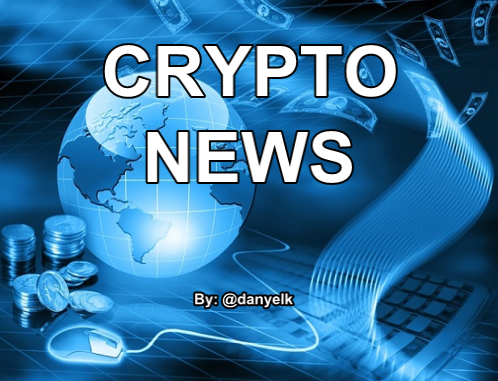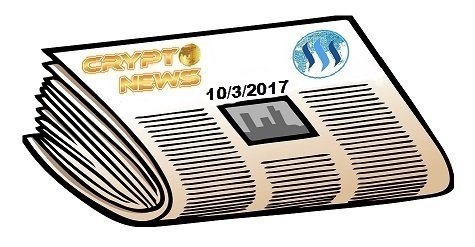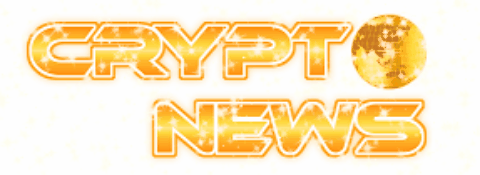
- Goldman Sachs sees Opportunities in Bitcoin trading!
- Milestone: R3 released Corda v1.0!
- LAToken brings a massive Expansion of Crypto in the Real Economy!
- New Coins on the Block: Kyber Network (KNC)!


The investment bank Goldman Sachs told the Wall Street Journal that the idea is to open the crypto trade for its own customers.
The possible entry into crypto currencies is not a coincidence, as many customers are interested in digital currencies and Goldman Sachs would now like to fulfill the desire.
Goldman Sachs said to the Wall Street Journal:
If Goldman Sachs were to succeed in offering Bitcoin trading to its customers in the future, this would be a headline in many respects. On the one hand, Goldman Sachs would position itself diametrically to the competitor JPMorgan, whose CEO, Jamie Dimon, had recently emphasized several times that he is absolutely nothing from Bitcoin and other digital currencies. On the other hand, Goldman Sachs could steer enormous customer deposits into the crypto market.
The effect could trigger a crypto rally in the markets as it would be expected that the competition Goldman Sachs would not leave the field alone. Within a very short space of time, double-digit billions could flow into Bitcoin and Co.
The fact that the crypto markets are very volatile is not at all a disadvantage. Finally, Goldman Sachs is looking for speculative financial products to serve, among other things, hedge funds. Volatility is therefore seen as an opportunity here, as a disadvantage is high volatility at the same time also harbors the chance of high returns.
This is what Goldman Sachs urgently needs, as the investment house has to contend with high profit losses. The Wall Street investment bank is accordingly innovative to generate new sources of income.
However, regulations are still very unclear. Several Bitcoin fund products have failed to comply with an authorization from the US Securities and Exchange Commission (SEC). The question then arises as to how Goldman Sachs wants to enable its customers to trade digital currencies. Also questions of liability and theft protection would have to be clarified in advance.

After two years of intensive work and an investment of more than 100 million US dollars, the R3 chief developer Richard Gendal Brown was able to announce the release of Corda v1.0. More than half of the 100 companies involved in the project have extensively researched Corda over the last few years and further developed the project.
Corda was first presented in 2016 as a solution for the global transaction market of international companies. Over time, however, the project has also developed into a useful tool for the conclusion of contracts between companies. With the release of version 1.0, R3 members, partners and open source developers are now able to test and develop their own applications in the Coda environment for the first time without being affected by future version updates.
Brown said in an interview with CoinDesk:
Brown also said that R3 now provides three core APIs that are compatible with older versions of Corda. This feature is especially useful for the development of decentralized apps.
Even if the core platform remains unchanged, the developers of the R3-Blockchain consortium will continue to experiment and develop the code further.
Brown also said:
The user decides which information is visible
On the Corda platform, companies can decide which information they want to share with other users, unlike most blockchain projects. This feature attracts many banks, regulators and tech companies.
Just recently, a major UK financial regulator - a banking group consisting of 11 banks including BNP Paribas, HSBC, ING and Mizuho - and tech giant Hewlett Packard have begun to develop their applications on the Corda platform.

Blockchain has already revolutionized many branches of industry, ranging from the financial sector and security to e-governance and jurisdiction. However, it is becoming even more disruptive since there is still a big gap between the real and crypto economy that needs to be bridged. LAToken, the first protocol for the tokenization of a wide variety of objects, is now filling this gap by creating a blockchain platform that allows users to generate and trade asset tokens worth the price of real objects is bound.
The LAT protocol changes access to capital and makes it possible to spread crypto currencies widely in the real economy, making the capital markets more transparent, efficient and sustainable, while avoiding the costs of a traditional intermediary.
Multi trillion dollar market
LAToken's research team, together with four Alumnis from McKinsey and Deutsche Bank, estimated that the total market capitalization of crypto currencies will reach five trillion US dollars by 2025. According to the paper, this growth will largely be driven by asset tokens, which will account for about 80% of the total market. Because their value is tied to real items, they are not as volatile as other crypto currencies and are more likely to be appreciated by regulators.
Valentin Preobrazhens, the founder of LAToken, calls his goal to tokenize a total trade value of 1.2 billion US dollars by 2025 and thus a sort of "Nasdaq on the blockchain with a wider range of tradable items and elementary lower processing times and transaction costs " to accomplish. He estimates that the turnover of the LAT platform can exceed USD 14 trillion by 2015.
The well-known investor Chris Kacher, author of the bestseller "How We Made 18,000% in the Stock Market" and one of the biggest supporters of LAToken, expresses his hope in the future of LATokens as follows: "It is not difficult to recognize the crypto Area within the next few years will be worth tens of US dollars. I believe that LAToken will directly affect this development and establish itself in the crypto area. "
How does LAToken work?
LAToken is developing an open-source protocol for the liquidation of objects, which creates a link between the token and the underlying asset, and enables the fast creation of asset tokens, which can then be traded via the platform and other crypto exchanges.
In the protocol, objects worth $ 600 trillion can be tokenized, ranging from stocks and commodities to real estate and even art. The platform is already in operation and allows trading with tokenized shares of Apple, Tesla, Google and other blue chips, as well as gold, oil and real estate ETFs as crypto currencies.
Game Changer
The LAT platform allows crypto owners to diversify their crypto portfolio with all possible asset classes (shares, debts, commodities, real estate, works of art) without having to exchange in Fiat. For crypto-owners, this also provides the unique opportunity to acquire shares in illiquid investments, which are otherwise only accessible to very rich investors, such as large buildings or very valuable works of art. Fiat traders benefit from lower transaction costs and availability around the clock compared to Nasdaq. Owners of illiquid items can tokenize and sell them in individual items, with an estimated premium of 10-40%.
"LAT platform adds significant value to blockchain applications, revolutionizing the way crypto currencies are traded in the real economy," said Mike Jones, former CEO of MySpace. "Finding liquidity for illiquid goods is a trillion market. Success is where a solution is created to address a big market, "adds Mitchell Manoff, CEO and founder of Corinthian Partners.
LAT Token Sale
Almost 50 million LATokens have been sold to more than 9,000 members of the community who contributed a total of $ 15.6 million to the first round of the Token Sales. For the next round the mark of 25 million US dollars is targeted. Currently, talks are being finalized with four large crypto exchanges, which will list LAToken.
More information about the Token-Sale can be found here.

Since a few days, Kyber Network Crystals (KNC) have been bought - and already have ranked 26th of the market capital on Coinmarketcap.
After a long break, which was filled with other projects and articles, I finally come back to a New Coin on the Block! New is here really to be understood as brand new: On September 16, the token sale has been completed and since 24 September the token has been tradable on various smaller exchanges such as Binance, Liqui or EtherDelta.
There is also little to say about the price developments. Nevertheless, the market capital is almost 250 million US dollars. The reason for this is the successful ICO with which the project was able to purchase Token worth 200,000 ETHs by September 16th.
Kyber Network - decentralized, instantaneous trading of crypto currencies
What has attracted a lot of investors to put money into this project? Kyber Network wants to create an Ethereum-based, decentralized system, which allows instantaneous trades between different crypto currencies. Without an order book, quick exchange deals will come, so that token holders from Altcoin A can only pay for people who only accept Altcoin B, but they can still pay money quickly and without further effort. By setting up a so-called contract wallet, this is also to be transferred to smart contracts. Finally, Kyber Network would like to develop especially comprehensive APIs and dashboards for different user groups.
The way to this is to be pursued by providing for a reasonable amount of different crypto tokens instead of a global order book by setting up a kind of decentralized reserve bank, thus providing the necessary liquidity. This decentralized reserve bank is controlled by a smart contract, which also takes the exchange rates from all the individual reserves, whereby these individual exchange rates are derived from reserve managers. The contract is only looking for the cheapest. Finally, all exchange transactions will be carried out through this smart contract. The entire system is designed so that new tokens can be quickly added and removed.
The ecosystem of Kyber Network will consist of several stakeholders: in addition to regular users, those entities that retain coin reserves and thus lend the network liquidity will exist. These will participate in the profits generated by the network. With regard to these reserve banks, it is planned that they can be organized in a decentralized and open manner. MelonPort will be used as an example. In addition, various on- and off-chip mechanisms are to be implemented, which should prevent deceptive changeovers.
Finally, the role of the operator for enlisting and delisisting new or dead coins will ensure. This role is currently the responsibility of the project team, but decentralized governance is not planned.
Role of the KyberNetwork Crystals (KNC)
Why do I need my own token? KyberNetwork Crystals (KNC) is the internal currency used to pay for various activities within this ecosystem. For example, the exchange fee in KNC is paid to the reserve banks. A portion of these KNC tokens are burnt with each transaction, which is expected to increase the value of the remaining ones. The level of charges should be determined regularly by the Kyber Network Operator.
Overall, not a uninteresting project. While reading the white paper, it is surprising that the Kyber Network compares only to a limited number of market participants. The fact that a decentralized exchange system has great advantages over classical exchanges like Poloniex or centralized entities such as Coinbase does not want to dispute. Although some decentralized exchanges have been made, Ether Delta, 0x and Shapeshift are mentioned in this regard. It is emphasized that they do not allow instantaneous exchange transactions, so users have to wait several minutes for their payments. It is also criticized that the exchange rate is determined either via an order book or offline via a third party. Nevertheless, there is no specific comparison to the Lightning Network keyword Atomic Swaps, TenX, or the Interledger project by Ripple, to name but a few. Decentralized exchanges and the management of several crypto currencies are currently being examined by different parties. Likewise, the role of the operator has to be defined more precisely, the cyber network would be a very centralized system.
However, with Vitalik Buterin in the Advisory Board, the project has an extremely well-known advocate. If you want to find out more about Kyber Network, please refer to the Website or the White Paper.

I wish you all a lovely Tuesday!!!
ⓁⓄⓥⒺ & ⓁⒾⒼⒽⓉ
Best regards
.gif)


